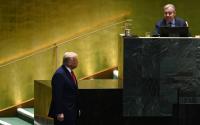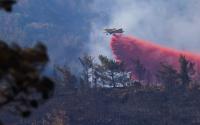19 October 2007The Independent
Climate change is continuing to progress in the Arctic, according to the first annual edition of an "Arctic Report Card" issued by a US-led team of scientists.
While some elements of the complex Arctic climate system and its associated ecosystems showed a stabilisation in warming, observations collectively indicated that the overall warming of the Arctic as a whole continued in 2007, the scientists said. Some changes are larger and happening faster than previously predicted by supercomputer climate models.
"The bottom line is we are seeing some rapid changes in the Arctic," said Richard Spinrad, assistant administrator for oceanic and atmospheric research at the National Oceanic and Atmospheric Administration which released the report this week.
The most dramatic of these has been the reduction in the extent of summer sea ice, which at the end of the melting season in September this year was at a record low – 23 per cent below the previous record, set in 2005. It was 39 per cent below the average over the period 1979 to 2001.
On land, the annual surface temperature over areas north of 60°N was 1.0C above the mean value for the 20th century in 2006, the scientists said. This year, winter and spring temperatures were all above average throughout the whole Arctic, said James Overland, of the Pacific Marine Environmental Laboratory. "If you go back 100 years, it would be warm in one part of the Arctic and cold in another," he said. "We're not getting that now. This is unusual and looks like the beginning of a signal from global warming."
The report gave red "traffic lights" to conditions in the atmosphere and sea ice to show scientists have "a high level of confidence that things there are showing dramatic effects due to the warming temperatures", said Jacqueline Richter-Menge, of the US Army's Cold Regions Research and Engineering Laboratory in New Hampshire. The report gave yellow "caution lights" on conditions of the Greenland ice sheet, North Pole ocean temperatures, wildlife and permafrost. There were no green lights, which would have indicated "all systems were OK", said Dr Richter-Menge.
Another indicator of climate change is the condition of permafrost, the ground that has been frozen solid for centuries. Permafrost all around the Arctic started warming up in the 1970s and 1980s, but the warming slowed by the mid-1990s and showed almost no change by 2000, said Vladimir Romanovsky of the University of Alaska in Fairbanks. This shows that whatever is causing the permafrost to get warmer, it is consistent around the hemisphere, he said.
Continuing changes in Arctic wildlife, not necessarily caused by global warming, include declines in herds of caribou and invasion of the tundra by shrubs. Mike Gill, of the Circumpolar Biodiversity Monitoring Programme in Canada, said the largest declines in caribou are centred over Canada and parts of Alaska. The herds sometimes have problems migrating in changing conditions, meaning that calving occurs before they get to new feeding grounds, resulting in higher mortality.
The tundra itself is "shrubifying", he said, and the increased shrub cover over many regions affects habitat and local climate, since it tends to absorb more solar radiation.






